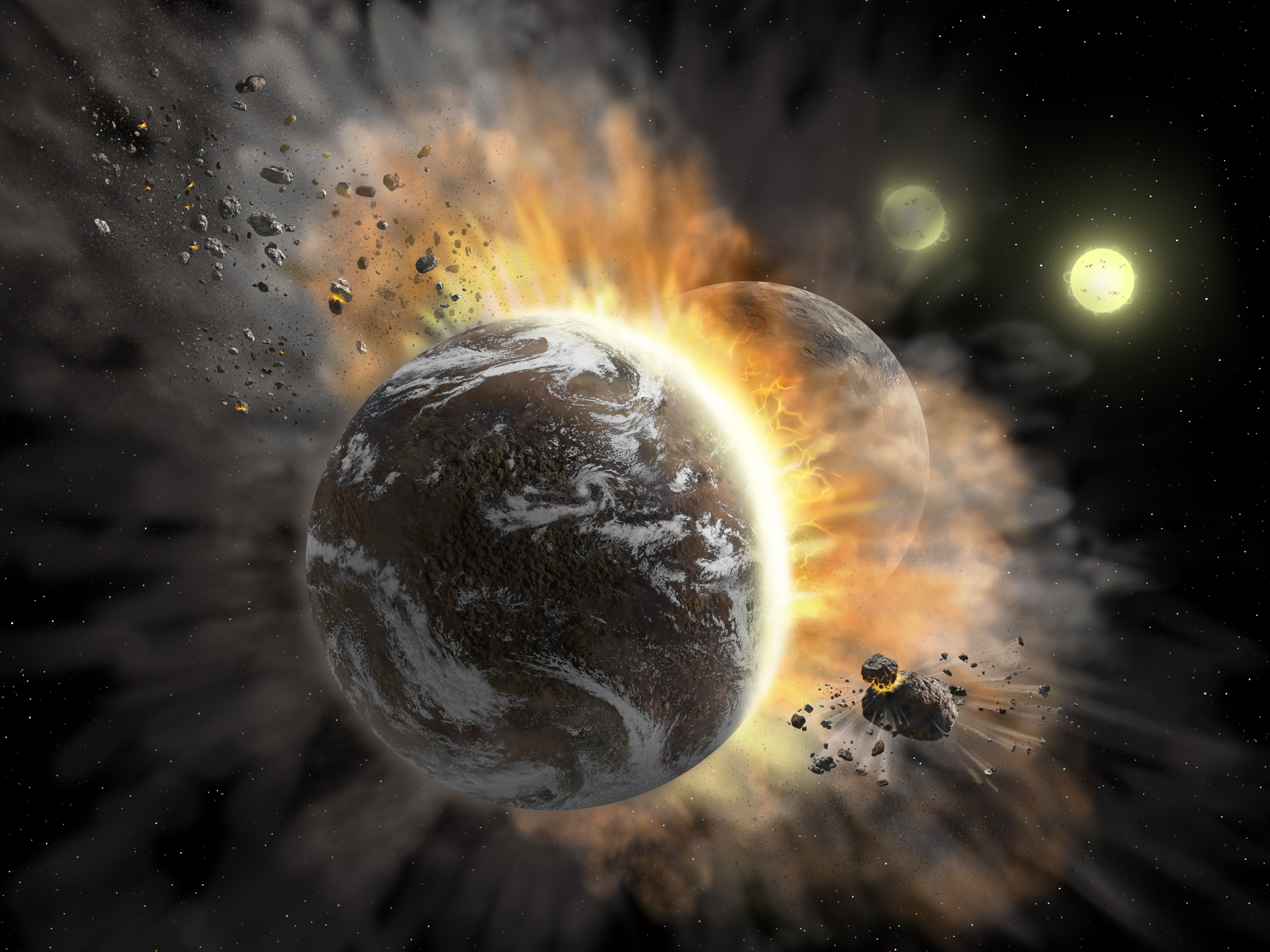Bam! Scientists Watch Distant Exoplanet Collision

Astronomers love a hot mess — at least when it can tell them more about how solar systems work.
When scientists studied a star system called BD +20 307 a decade ago, they saw a lot of warm dust. And when they checked in on the neighborhood again using SOFIA, an airplane-based telescope run by NASA and its German counterpart, scientists saw even more warm dust. That could be a sign that astronomers are seeing the residue of a fairly recent dustup.
"This is a rare opportunity to study catastrophic collisions occurring late in a planetary system's history," Alycia Weinberger, a staff scientist at the Carnegie Institution for Science in Washington, D.C., and the lead investigator on the project, said in a NASA statement. "The SOFIA observations show changes in the dusty disk on a timescale of only a few years."
Related: The Most Fascinating Exoplanets of 2018
Scientists know that giant impacts play an important role in shaping planetary systems. Close to home, astronomers believe that the moon formed during just such an impact. But that collision took place a long, long time ago, and scientists have to piece together the story of what happened from scattered clues.
That's just as well. It's better to watch such dynamics unfold in real time from afar because it would be awfully disruptive to try studying such an event nearby. Although dust isn't necessarily caused by collisions, warm dust should disperse and cool as a solar system ages. This distant solar system, about 300 light-years away, is located in a region full of stars at least a billion years old, which means birth debris should have cooled by now, according to the NASA statement.
And there aren't many events that should cause warm dust over as short a time frame (cosmically) as the scientists' observations of this star. That's why it's likely a planetary collision that's causing the mess, the research team said.
Get the Space.com Newsletter
Breaking space news, the latest updates on rocket launches, skywatching events and more!
The research is described in a paper published April 12 in The Astrophysical Journal; you can also read a copy posted to the preprint server arXiv.org.
- 7 Ways to Discover Alien Planets
- Photographing an Exoplanet: How Hard Can It Be?
- The Strangest Alien Planets in Pictures
Editor's note: This story has been updated to clarify the age of the star the solar system surrounds. Email Meghan Bartels at mbartels@space.com or follow her @meghanbartels. Follow us on Twitter @Spacedotcom and on Facebook.
Join our Space Forums to keep talking space on the latest missions, night sky and more! And if you have a news tip, correction or comment, let us know at: community@space.com.

Meghan is a senior writer at Space.com and has more than five years' experience as a science journalist based in New York City. She joined Space.com in July 2018, with previous writing published in outlets including Newsweek and Audubon. Meghan earned an MA in science journalism from New York University and a BA in classics from Georgetown University, and in her free time she enjoys reading and visiting museums. Follow her on Twitter at @meghanbartels.









